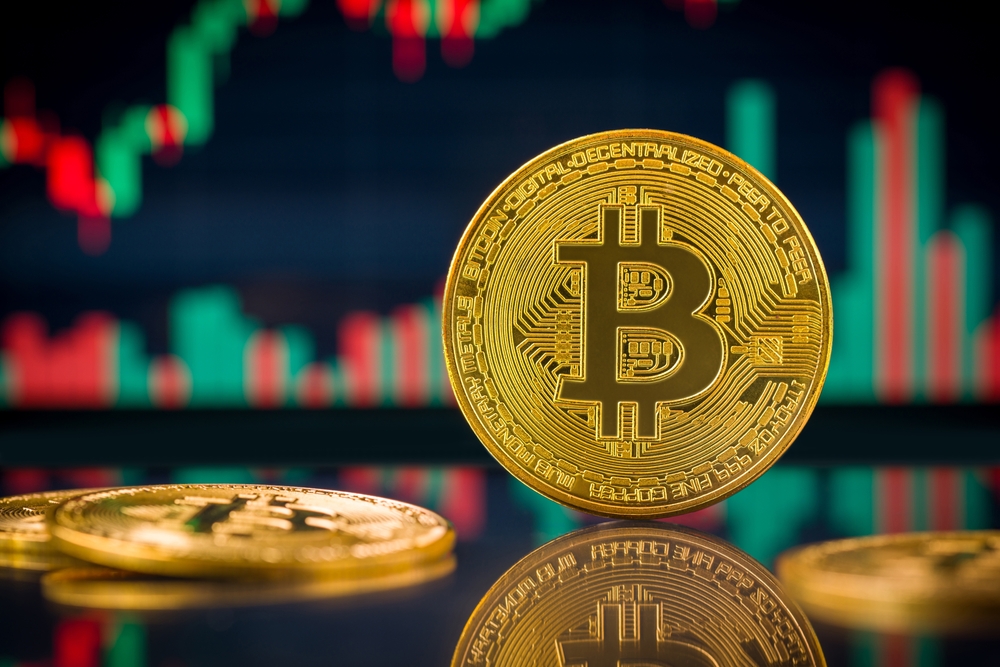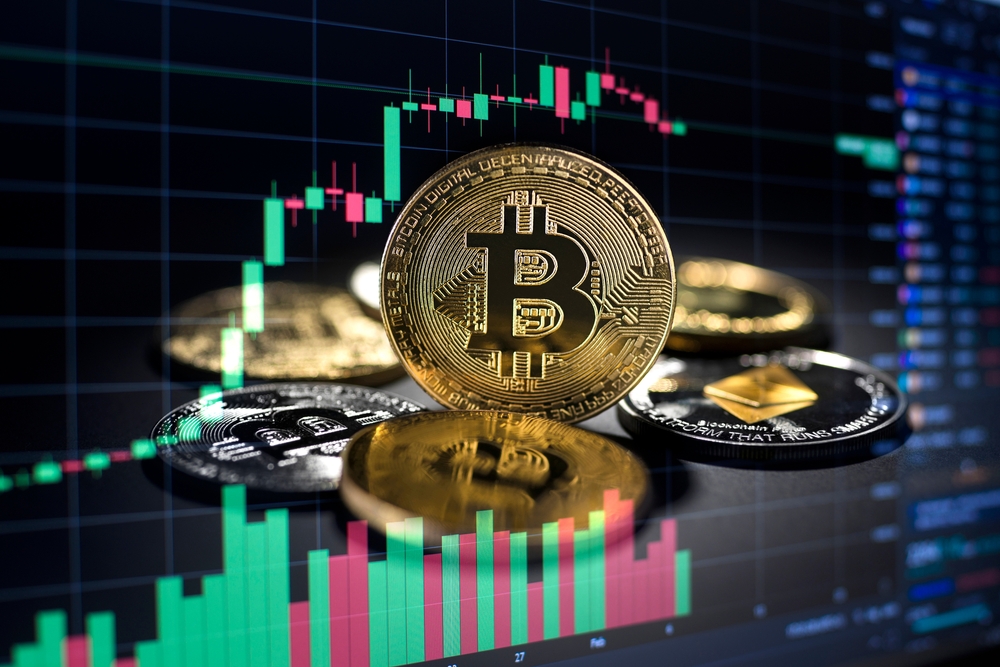The landscape of global reserves is undergoing a fundamental transformation. As governments worldwide grapple with monetary policy challenges, inflation concerns, and the need for financial sovereignty, a new type of strategic asset is emerging: the Bitcoin strategic reserve. This shift represents more than just portfolio diversification—it signals a fundamental reimagining of how nations and other countries approach economic security in the digital age.
Unlike traditional strategic reserves that rely on physical commodities like gold or oil, a strategic Bitcoin reserve leverages the unique properties of digital assets to provide governments with unprecedented monetary autonomy. With Bitcoin’s fixed supply of 21 million units and its decentralized nature, sovereign entities are discovering that digital gold and digital asset holdings can serve as both a hedge against fiat currency debasement and a tool for economic innovation.
The momentum behind Bitcoin strategic reserves has accelerated dramatically since 2025, when the United States government formally established its own Strategic Bitcoin Reserve through executive action. This watershed moment has prompted a global conversation about the role of digital assets in national reserves, with countries ranging from El Salvador to European nations exploring how Bitcoin reserves might strengthen their financial position.
What is a Bitcoin Strategic Reserve?
A Bitcoin strategic reserve represents a fundamental departure from conventional reserve management strategies. At its core, it involves the deliberate, long-term accumulation of Bitcoin by sovereign entities, central banks, or government institutions as part of their official reserves. This approach treats Bitcoin not as a speculative investment, but as a strategic asset designed to enhance financial security, stability, and economic sovereignty.
The defining characteristics that distinguish Bitcoin from traditional reserve assets make it particularly compelling for government reserves. Bitcoin’s capped supply creates an inherent scarcity that gold, despite its precious metal status, cannot match. While central banks can theoretically increase gold production or discover new deposits, Bitcoin’s algorithmic limit of 21 million units provides absolute certainty about future supply constraints.
The digital nature of Bitcoin also offers unprecedented portability and accessibility compared to physical assets. Traditional reserves, as well as Bitcoin assets, require complex logistics for storage, transportation, and verification. Gold reserves, for instance, must be physically moved and stored in secure facilities, creating operational constraints and costs. Bitcoin, by contrast, can be transferred globally within minutes and stored securely without the physical infrastructure required for commodities like oil or precious metals.
Perhaps most significantly, Bitcoin operates outside the control of any single government or central authority. This decentralized structure means that Bitcoin reserves cannot be frozen, seized, or manipulated by foreign governments—a consideration that has become increasingly important as nations seek alternatives to dollar-denominated reserves that could be subject to sanctions or political pressure.
The historical precedent for strategic asset stockpiling provides important context for understanding Bitcoin reserves. Just as the United States maintains its Strategic Petroleum Reserve to ensure energy security, and countries hold gold reserves as a store of value, Bitcoin strategic reserves serve as a modern adaptation of this principle for the digital age. However, unlike physical commodities that can be consumed or degraded over time, Bitcoin maintains its properties indefinitely, making it potentially superior as a long-term strategic asset.
The United States Strategic Bitcoin Reserve Initiative
The establishment of America’s Strategic Bitcoin Reserve marked a pivotal moment in the mainstream acceptance of digital assets as legitimate reserve holdings. When President Trump signed the executive order in March 2025 for the federal government , it represented the first time a major world power formally recognized Bitcoin as a strategic asset worthy of sovereign accumulation and management.
The executive order mandated that all Bitcoin confiscated or forfeited to the United States government be consolidated into a single custodial account, administered by the Treasury Department. This budget-neutral approach addressed political concerns about using taxpayer funds to purchase Bitcoin while simultaneously building substantial government reserves from existing seized assets. Over the years, federal agencies had accumulated tens of thousands of Bitcoin through various law enforcement actions, including major seizures related to darknet marketplaces and cybercrime investigations.
Simultaneously, the White House established a separate Digital Asset Stockpile for non-Bitcoin digital assets, including Ethereum, Solana, XRP, and Cardano. This distinction acknowledges Bitcoin’s unique position as the primary store-of-value cryptocurrency while recognizing the potential strategic value of other digital assets, including the digital asset stockpile with different use cases and technological capabilities.
The initiative positions the United States government as aiming to become the “crypto capital of the world,” signaling a dramatic shift from previous regulatory uncertainty toward active engagement with digital asset markets. This strategic positioning is designed to maintain American leadership in financial innovation while potentially providing significant economic benefits as digital assets mature.
Implementation and Structure
The operational framework for managing the Strategic Bitcoin Reserve involves multiple federal agencies working in coordination with the Treasury Department. Unlike traditional reserves that might be held by the Federal Reserve or national Bitcoin reserve and other specialized institutions, Bitcoin reserves require unique technical expertise and security protocols that bridge traditional finance and digital asset management.
The legal framework governing these reserves builds upon existing asset forfeiture laws while establishing new protocols for digital asset custody and management. Federal agencies involved in seizures must now follow specific procedures to ensure Bitcoin and other digital assets are properly secured and transferred to the strategic reserve rather than being liquidated at auction as was previous practice.
Security protocols for sovereign custody represent one of the most complex aspects of implementation. Government Bitcoin holdings, as part of budget neutral strategies, require sophisticated multi-signature wallet arrangements, geographically distributed storage systems, and extensive cybersecurity measures to protect against both external threats and internal risks. The Treasury Department has worked with leading custody providers and cybersecurity firms to develop protocols that meet the unique requirements of sovereign digital asset management.
The transition from liquidation to strategic retention represents a significant policy shift that affects how federal agencies approach seized digital assets. Previously, seized Bitcoin would typically be auctioned to the public, often creating substantial market impacts when large quantities were sold. Under the new framework, these assets become part of the nation’s strategic reserves, potentially reducing market volatility while building long-term value for the government.
Global Adoption: Countries Building Bitcoin Reserves
The movement toward sovereign Bitcoin adoption extends far beyond the United States, with countries across different economic and political contexts exploring how digital asset holdings might strengthen their financial position. El Salvador’s pioneering decision to adopt Bitcoin as legal tender in 2021 represented the first instance of a nation-state fully embracing Bitcoin as part of its monetary system.
El Salvador’s approach goes beyond symbolic adoption to include active accumulation of Bitcoin reserves through various mechanisms. The country has purchased Bitcoin directly using government funds, accepted Bitcoin for various government services, and even leveraged volcano-powered geothermal energy for Bitcoin mining operations that contribute to national reserves. While the strategy has faced criticism due to Bitcoin’s volatility, it has also positioned El Salvador as a leader in digital asset adoption among emerging economies.
Bhutan has taken a particularly innovative approach by leveraging its abundant hydroelectric power resources for Bitcoin mining operations that directly contribute to national reserves. This strategy allows the country to monetize its renewable energy resources while building strategic Bitcoin holdings without direct fiscal impact. The approach has proven successful enough that Bhutan has expanded its mining operations and become one of the world’s largest sovereign Bitcoin holders relative to its economic size.
Current sovereign holdings, while still modest compared to traditional reserves, represent significant value accumulation. Finland holds approximately 890 BTC as of July 2025, primarily from law enforcement seizures, while India maintains around 450 BTC through similar means. These holdings, while initially accumulated through legal processes rather than strategic purchases, have prompted discussions about the potential benefits of more deliberate accumulation strategies.
Iran and Japan have both announced plans to develop Bitcoin reserve frameworks, though their approaches differ significantly. Iran’s interest stems partly from the desire to circumvent international sanctions and reduce dependence on dollar-denominated transactions, while Japan’s approach focuses more on technological leadership and financial innovation within existing international frameworks.
European Developments
European interest in Bitcoin reserves has emerged through various channels, with some surprising advocates among traditionally conservative financial institutions. Czech National Bank Governor Aleš Michl has publicly supported exploration of Bitcoin reserves as a potential complement to traditional gold holdings, arguing that central banks should investigate all potential reserve assets that might provide diversification benefits.
Switzerland’s approach has been particularly noteworthy, with a constitutional referendum proposal that would require the Swiss National Bank to hold Bitcoin alongside its substantial gold reserves. While the proposal faces significant political hurdles, it represents the most formal consideration of Bitcoin reserves at the constitutional level anywhere in the world. The referendum reflects broader Swiss interest in maintaining financial innovation leadership while preserving monetary sovereignty.
Sweden’s parliamentary inquiry asking the Riksbank to consider Bitcoin reserves demonstrates how the conversation has moved into mainstream political discourse even in countries with traditionally conservative monetary policies. The inquiry specifically requests analysis of how Bitcoin reserves might complement existing reserve strategies and what implementation challenges would need to be addressed.
This European interest contrasts sharply with opposition from ECB President Christine Lagarde, who has consistently argued against Bitcoin reserves for European central banks. Lagarde’s position reflects concerns about volatility, regulatory uncertainty, and potential conflicts with existing monetary policy frameworks. This tension between national-level interest and supranational caution illustrates the complex political dynamics surrounding Bitcoin adoption in federal or confederated systems.
Institutional and Sub-National Adoption
State and local governments have emerged as important early adopters of Bitcoin strategic reserves, often moving more quickly than federal authorities due to their greater operational flexibility. New Hampshire’s Strategic Bitcoin Reserve legislation allows the state to allocate up to 5% of its investment portfolio to Bitcoin, representing one of the first formal state-level Bitcoin reserve frameworks in the United States.
Arizona has developed an innovative approach by funding its BTC reserve through seized assets and staking rewards rather than direct appropriations. This model addresses political concerns about using taxpayer funds for volatile assets while still building meaningful digital asset holdings. The state’s framework also includes provisions for staking activities that can generate additional returns, though these carry additional technical and regulatory complexities.
University endowments have proven to be particularly active in building Bitcoin exposure, often moving ahead of government institutions due to their investment mandates and longer time horizons. Emory University’s $15.1 million Bitcoin allocation represents substantial exposure for an educational institution, while Brown University’s $4.9 million position demonstrates that Bitcoin adoption spans institutions with different geographic and cultural contexts.
The University of Austin’s planned $5 million Bitcoin allocation reflects growing confidence among academic institutions that Bitcoin represents a legitimate long-term investment rather than speculative trading. These institutional adoptions are significant because university endowments typically employ sophisticated investment analysis and have longer time horizons than many other institutional investors.
Wisconsin State Investment Board’s $160+ million Bitcoin ETF purchases in 2024 represent one of the largest state-level exposures to Bitcoin in the United States. The board’s approach of using ETF products rather than direct Bitcoin holdings reflects institutional comfort with regulated investment vehicles while still gaining meaningful exposure to Bitcoin’s price performance.
These sub-national adoptions serve as important laboratories for Bitcoin reserve management, providing practical experience and data that can inform larger-scale implementations. The diversity of approaches—from direct holdings to ETF investments to mining operations—demonstrates the flexibility available to institutions seeking Bitcoin exposure while managing various regulatory and operational constraints.
Economic Benefits and Strategic Rationale
The economic rationale for Bitcoin strategic reserves encompasses multiple dimensions of modern monetary policy and portfolio management. Portfolio diversification represents the most straightforward benefit, as Bitcoin’s historically low correlation with traditional assets provides genuine diversification value for reserve portfolios heavily weighted toward government bonds and currencies.
The hedge against fiat currency debasement has become increasingly relevant as major central banks have engaged in unprecedented monetary expansion since the 2008 financial crisis. Bitcoin’s fixed supply provides a natural hedge against inflationary policies that erode the purchasing power of fiat currency reserves. This consideration has become particularly important for countries whose reserves are heavily denominated in currencies subject to quantitative easing programs, especially when considering the need to sell Bitcoin .
Monetary autonomy represents perhaps the most strategically significant benefit, particularly for countries seeking alternatives to dollar-dependent reserve systems. Traditional reserves often require maintaining relationships with foreign central banks and remaining within international payment systems that can be subject to political pressure or sanctions. Bitcoin reserves provide a genuinely neutral alternative that operates independently of any single country’s monetary policy or political objectives.
The potential for addressing national debt through Bitcoin appreciation, while speculative, has attracted attention from policymakers in highly indebted countries. Bitcoin’s historical price appreciation, if sustained over long periods, could theoretically provide governments with substantial unrealized gains that improve their fiscal position without requiring traditional revenue generation or debt issuance.
Signaling effects for innovation leadership and digital economy participation represent important secondary benefits that may prove as valuable as direct financial returns. Countries that establish Bitcoin reserves signal their openness to financial innovation and digital asset adoption, potentially attracting investment in blockchain technology, cryptocurrency businesses, and related industries.
Market Impact and Price Dynamics
Sovereign accumulation of Bitcoin creates potential supply shock effects that could fundamentally alter Bitcoin’s market dynamics. With approximately 19.7 million Bitcoin already mined and substantial quantities lost or held in long-term storage, the available supply for active trading is already limited. Government accumulation removes additional Bitcoin from circulation, potentially creating sustained upward price pressure.
The legitimacy effects of government participation extend beyond direct market impact to influence institutional behavior and regulatory frameworks. When governments hold Bitcoin as strategic reserves, it becomes much more difficult for other authorities to characterize Bitcoin as purely speculative or lacking legitimate use cases. This legitimacy can accelerate institutional adoption and regulatory clarity.
Correlation changes between Bitcoin and traditional markets represent an important consideration for reserve management. As institutional adoption increases, Bitcoin’s correlation with traditional assets may increase, potentially reducing its diversification benefits. However, its fundamental properties—particularly the fixed supply and decentralized governance—suggest it may maintain some independence from traditional market cycles.
The institutional behavior shifts following government adoption have already become apparent in various markets. Corporate treasury strategies increasingly include Bitcoin considerations, and investment advisors are developing frameworks for evaluating digital asset allocation in institutional portfolios. This trend suggests that government adoption may catalyze broader institutional acceptance.
Challenges and Risk Management
Bitcoin volatility remains the most frequently cited concern about strategic Bitcoin reserves, and the concern is well-founded given Bitcoin’s historical price swings. Government balance sheets typically prioritize stability over potential returns, making Bitcoin’s volatility genuinely problematic for traditional reserve management approaches. However, several factors may mitigate these concerns over time, including increased market depth, regulatory clarity, and longer investment horizons.
Custody security requirements for government Bitcoin holdings exceed those of private institutions in both complexity and consequence. Government reserves face unique threats including nation-state cyber attacks, insider threats, and the political implications of security failures. Best practices include geographically distributed multi-signature storage, redundant backup systems, and extensive operational security protocols that balance accessibility with protection.
Regulatory compliance needs vary significantly across jurisdictions and continue evolving as legal frameworks adapt to digital asset adoption. Government Bitcoin holders must navigate complex reporting requirements, transparency obligations, and potential conflicts between operational security and public accountability. These challenges require ongoing coordination between treasury departments, regulatory agencies, and technical implementation teams.
Political continuity risks across electoral cycles represent a unique challenge for Bitcoin reserves, as new administrations may have different views on digital asset policy. Unlike traditional reserves that enjoy broad bipartisan support, Bitcoin reserves may face political opposition that could lead to liquidation or policy reversal. This risk requires careful consideration of implementation frameworks that can survive political transitions.
Central Banks vs. Sovereign Wealth Funds
The institutional frameworks for Bitcoin reserves reveal important distinctions between different types of government entities. Central banks typically have narrow mandates focused on monetary stability and may face legal or practical constraints on holding volatile assets like Bitcoin. Their primary responsibilities involve short-term liquidity management and exchange rate stability, making Bitcoin’s volatility particularly problematic.
Sovereign wealth funds, by contrast, often have broader investment mandates and longer time horizons that make them better suited for Bitcoin exposure. These funds typically target higher returns to support long-term fiscal objectives and have greater flexibility to hold volatile assets as part of diversified portfolios. Their investment committees often include professionals with experience in alternative assets and risk management.
Energy-rich nations have unique opportunities to leverage domestic mining for reserve accumulation, potentially acquiring Bitcoin at below-market costs while supporting domestic energy utilization. Countries with abundant renewable energy resources can operate mining facilities that convert excess energy capacity directly into Bitcoin reserves, creating a natural resource monetization strategy that bypasses traditional commodity markets.
The different institutional frameworks also affect implementation timelines and political feasibility. Sovereign wealth funds can often move more quickly than central banks, which typically require extensive regulatory review and legislative approval for major policy changes. This institutional flexibility may explain why some sovereign wealth funds have moved ahead of central banks in digital asset adoption.
Expert Analysis and Economic Assessment
Academic and institutional perspectives on Bitcoin strategic reserves remain divided, reflecting the broader uncertainty about digital assets’ long-term role in the global financial system. A February 2025 University of Chicago survey found no economists supporting the idea of governments borrowing money to purchase Bitcoin for reserves, highlighting concerns about using debt financing for volatile assets.
S&P Global Ratings has characterized most current Bitcoin reserve initiatives as primarily symbolic rather than having material fiscal impact, given the relatively small size of most holdings compared to overall government balance sheets. However, the rating agency acknowledges that larger accumulations could have meaningful effects on government creditworthiness, either positive or negative depending on implementation and market performance.
The International Monetary Fund has expressed concerns about Bitcoin reserves potentially undermining monetary sovereignty and financial stability, particularly in countries with less developed financial systems. IMF officials worry that Bitcoin volatility could destabilize government finances and that widespread adoption might complicate international monetary coordination.
Despite institutional caution, multiple parliamentary bills globally have been introduced to allow central bank Bitcoin holdings, suggesting significant political interest that may eventually overcome bureaucratic resistance. These legislative initiatives indicate that the conversation has moved beyond academic debate to practical policy consideration in numerous countries.
The expert consensus appears to be evolving as practical experience accumulates and market conditions change. Early academic skepticism is gradually giving way to more nuanced analysis that acknowledges both potential benefits and risks while recognizing that digital assets may play an increasing role in the global financial system regardless of current expert opinion.
Future Outlook and Strategic Implications
Bitcoin’s evolution from speculative asset to strategic reserve consideration represents a fundamental shift in how governments approach monetary policy and reserve management. This transformation reflects broader changes in the global financial system, including declining confidence in traditional monetary institutions, increasing geopolitical tensions, and growing recognition of digital assets’ unique properties.
The potential for international coordination through G20 or IMF frameworks could significantly accelerate Bitcoin adoption while addressing concerns about regulatory arbitrage and financial stability. International standards for digital asset reserves could provide the regulatory clarity that many institutions require before making substantial commitments to Bitcoin holdings.
Bitcoin reserves may increasingly influence global financial architecture and currency dynamics, particularly if adoption spreads among major economies. Countries with significant Bitcoin reserves could gain influence in international monetary discussions, while those without such reserves might find themselves disadvantaged in a world where digital assets play an increasing role in international trade and finance.
Growth trends in sovereign digital asset management suggest that Bitcoin reserves represent just the beginning of broader government engagement with blockchain technology and digital assets. Future developments may include central bank digital currencies backed by Bitcoin reserves, international payment systems utilizing digital assets, and the establishment of a Bitcoin strategic reserve, as well as new forms of monetary cooperation based on shared blockchain infrastructure.
The competitive dynamics among nations may drive further adoption as countries seek to avoid being left behind in digital asset accumulation. Similar to historical patterns with gold reserves, Bitcoin reserves could become a source of national prestige and economic leverage, creating incentives for continued accumulation even among initially skeptical governments.
The long-term implications extend beyond finance to encompass geopolitical realignments, technological innovation, and fundamental questions about the nature of money and value storage. As governments continue experimenting with Bitcoin strategic reserves, they are essentially participating in a global experiment about the future of monetary systems and economic sovereignty.
Bitcoin strategic reserves represent more than a new asset class—they embody a fundamental reimagining of how nations approach economic security in an increasingly digital world. As adoption spreads and implementation experience accumulates, Bitcoin reserves may prove to be either a prudent adaptation to changing monetary realities or an expensive experiment in financial innovation. The ultimate outcome will depend on continued technological development, regulatory evolution, and the broader trajectory of digital asset adoption across the global financial system.
The current trajectory suggests that Bitcoin strategic reserves will continue expanding, driven by both practical benefits and competitive pressures among nations seeking to maintain monetary sovereignty and economic flexibility. For governments and institutions considering Bitcoin reserves, the question may no longer be whether to adopt digital asset holdings, but rather how to implement them effectively while managing the associated risks and opportunities.



